Lite2Sound BC

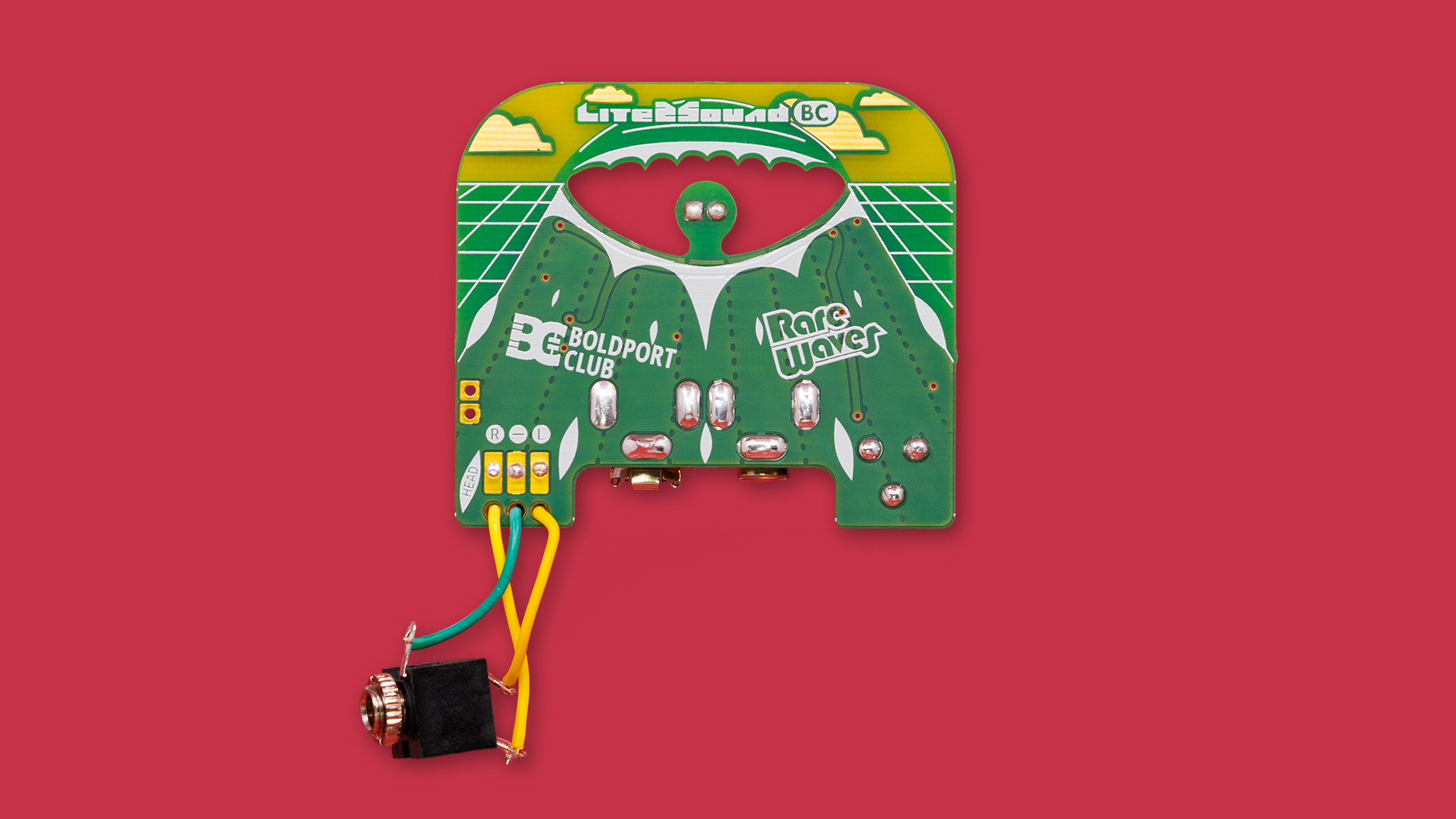
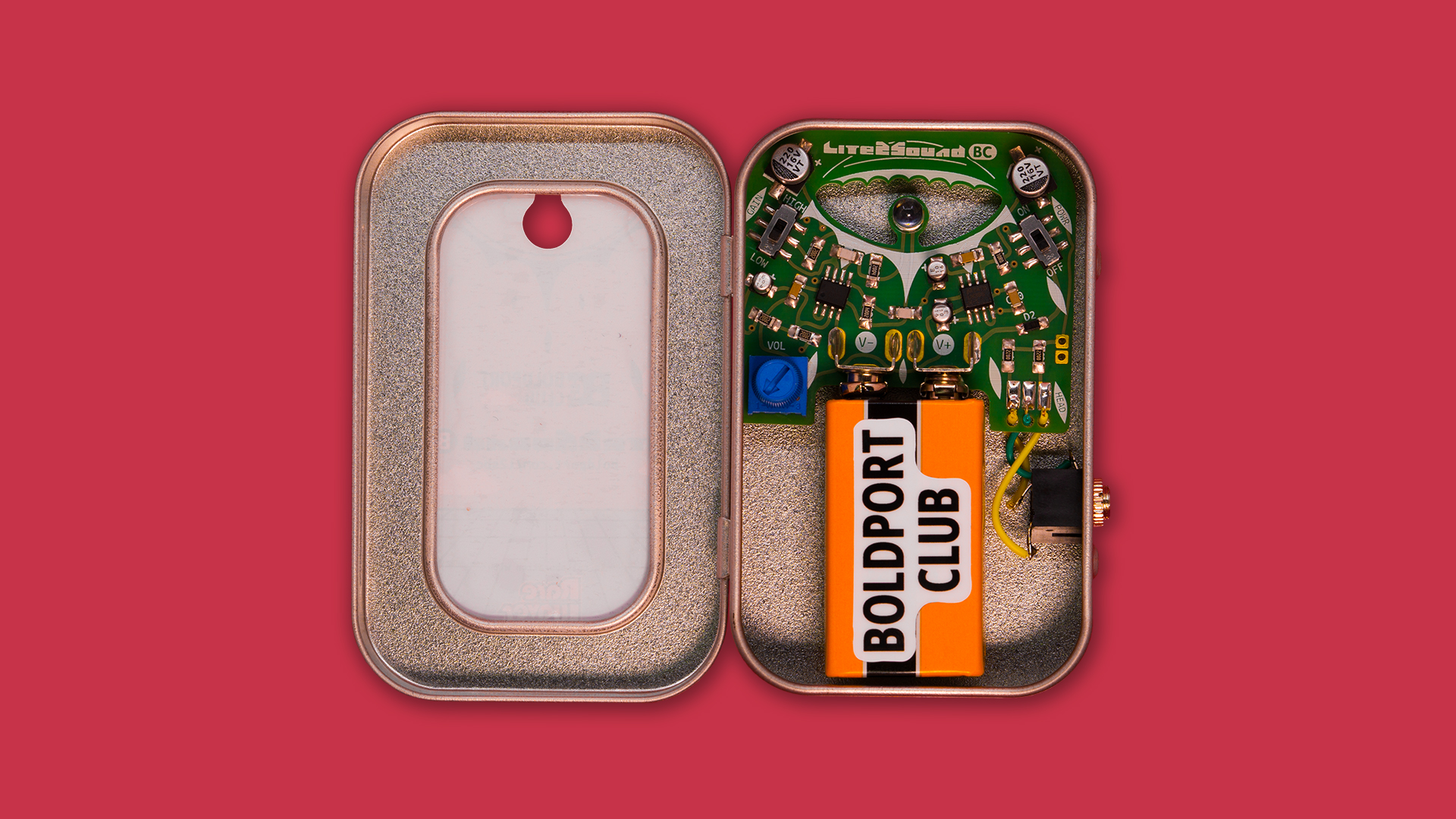
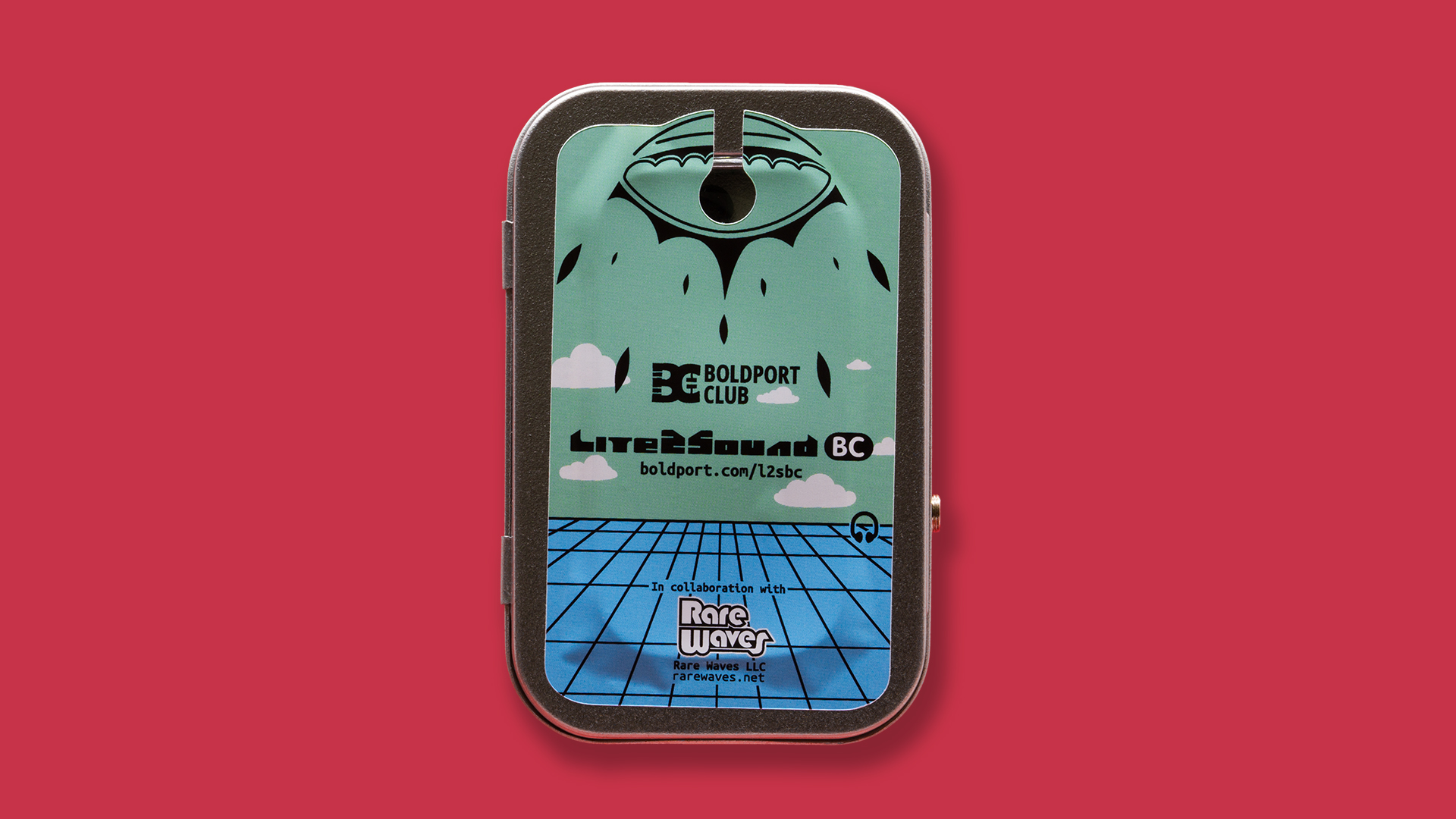


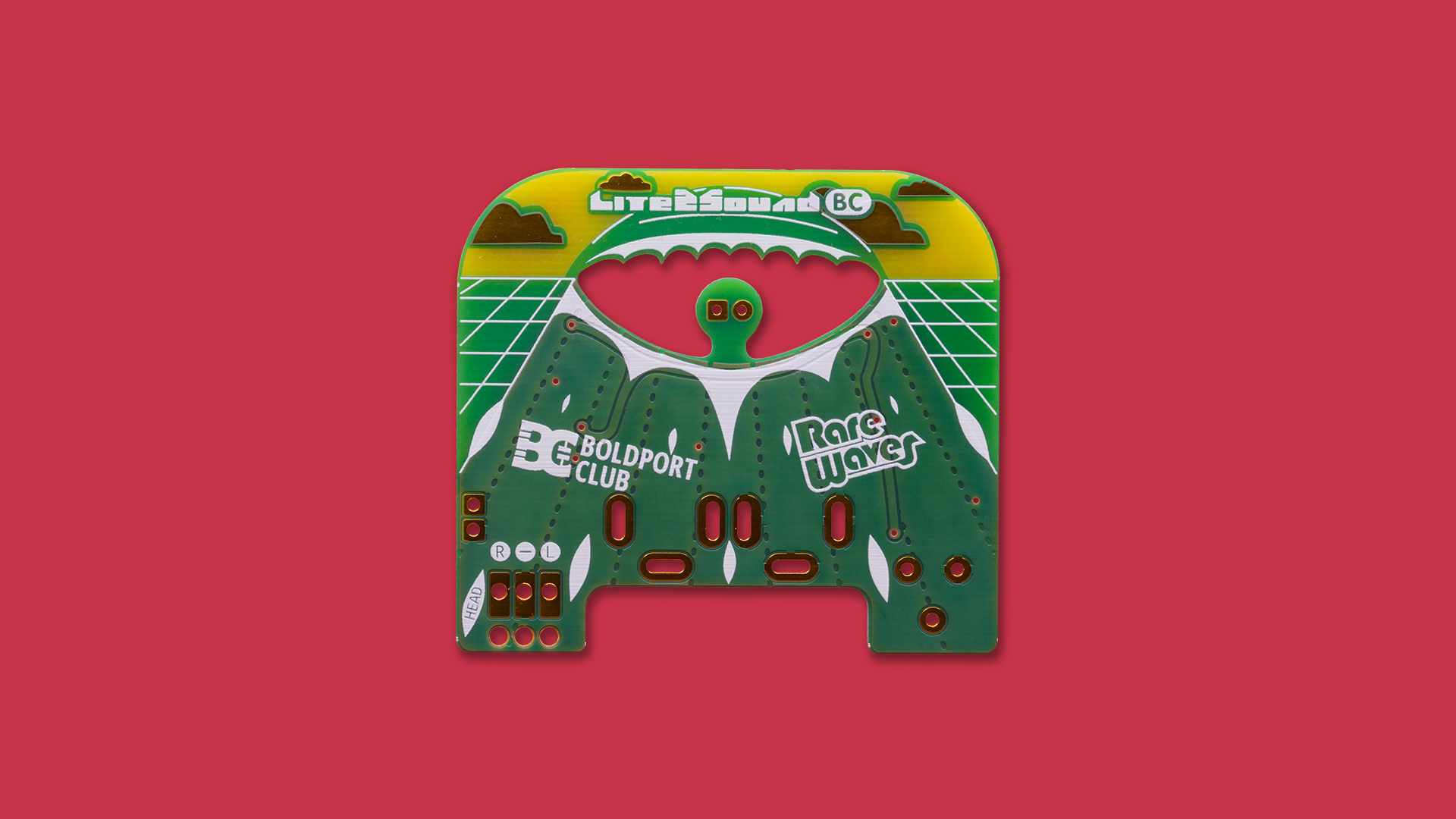
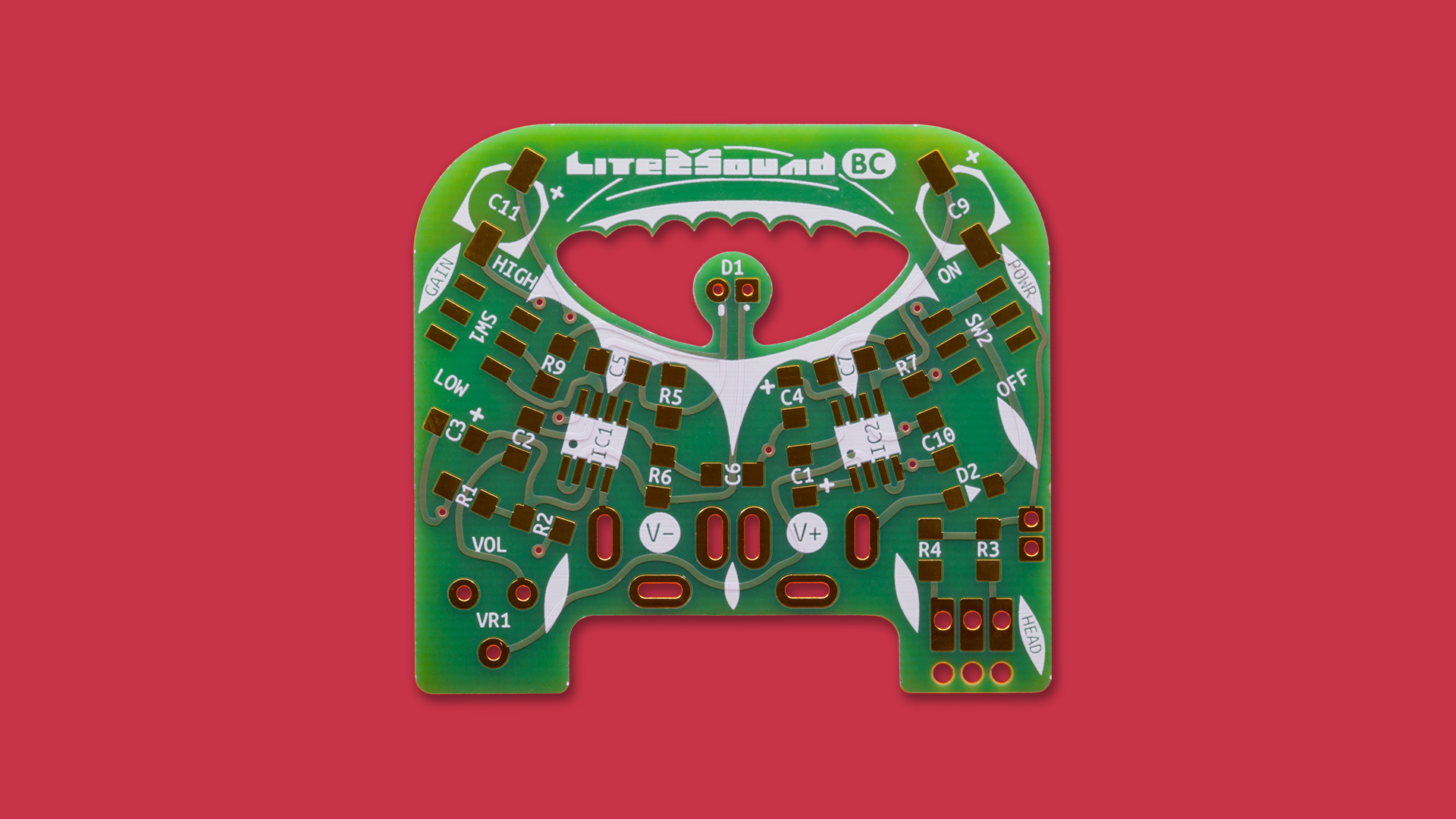
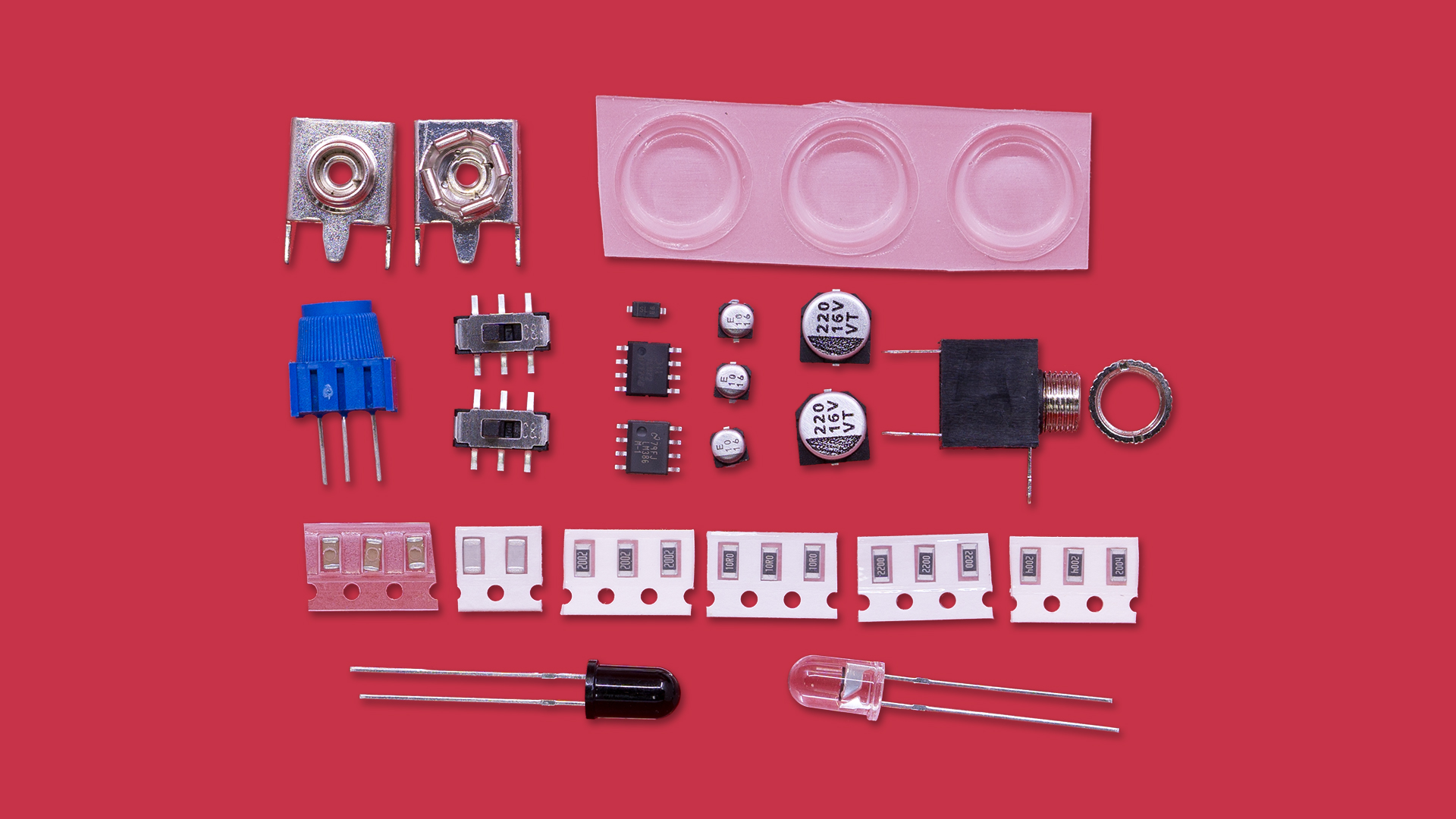
Lite2Sound BC
Listen to the light around you
Lite2Sound BC lets you explore the light in your environment by 'translating' it to sound. It does this by converting the small current from a photodiode into a voltage that's then used to drive an amplifier. Any light that fluctuates at an audible frequency, and is in the visible to near infrared spectrum, can be picked up by the circuit.
It comes packaged in a little minty tin that has a front window in it and hole for a headphone jack doubling as the project's enclosure.
Lite2Sound is a collaborative project. The idea and electronic design of this circuit was produced by Rare Waves LLC. It is a third in series of their products that include Lite2Sound PX and Lite2Sound QB.
Lite2Sound BC was project #26 of the Boldport Club.
What’s included
3x 10µF electrolytic capacitors, Nichicon UWX1C100MCL2GB
2x 220µF electrolytic capacitors,Multicomp MCVVT016M221EA6L
2x 220pF C0G ceramic capacitors, Multicomp MC1206N221J500CT
3x 100nF ceramic capacitors, Kemet C1206S104K5RACTU
3x 10Ω resistors, Walsin WR12X10R0FTL
3x 220Ω resistors, Walsin WR12X2200FTL
3x 20KΩ resistors, Walsin WR12X2002FTL
3x 2MΩ resistors, Walsin WR12W2004FTL
1x Schottky diode, Diodes 1N5819HW-7-F
1x Photodiode, On Semi QSD2030F
1x Photodiode, On Semi QSD2030
1x Low noise op-amp, Diodes TL072SG-13
1x Power amplifier, TI LM386MX-1/NOPB
1x 3.5mm stereo socket, TruConnect PJ-301DM
1x 50kΩ pot, Suntan TSR3386F-EY5-503-TR
2x Switch, C&K JS202011SCQN
1x Battery contact positive, MPD BSPCF
1x Battery contact negative, MPD BSPCM
3x 12.7mm self-adhesive feet, RVFM PD.2125
1x Lovely PCB
1x Metal enclosure with a hole
1x Light blocking sticker for tin
Schematic of Lite2Sound BC | PDF
Assembly
Assembly instructions are in the infographic.
(Optional: if you would like to use solder paste OSH Stencils are offering a stencil at a 15% discount. Just use this link.)
Note: If soldering with hot air take care not to over heat the switches as the nylon plastic parts can melt. Because the board has big pads and traces it is advised to make sure the board generally heated up well before directly heating the component pins.
How to attach a speaker (not included)
TAKING IT FURTHER
The Lite2Sound BC has a few possibilities for expansion and modification. For example the LM386 IC on board is a speaker driver so it can directly drive a mini speaker. A small speaker may be mounted using the two pads located to the right of D2.
How to attach a speaker (not included)
You may notice vibrations can be picked up through the PCB. This is because of the microphonic properties of Class II multilayer ceramic capacitors. (Ideally we wanted to use all class I MLCCs but currently in 2017-2018 there is a shortage of affordable 100nF components.) If C2, C7 and C10 are replaced with C0G equivalents this microphonic effect can be reduced.
It is also possible to experiment with different types of enclosures and lenses. For example changing the angle of incoming light or focusing on light at a further distance.
If you find it annoying to be constantly changing the gain switch and want a more dynamic receiving range, have a look at the Lite2Sound PX from Rare Waves. It includes an automatic gain control circuit that adjusts the gain of the amplifier to match the volume of the sound coming in.
Additional information
Community contributions for this project
Open source circuit board design files



